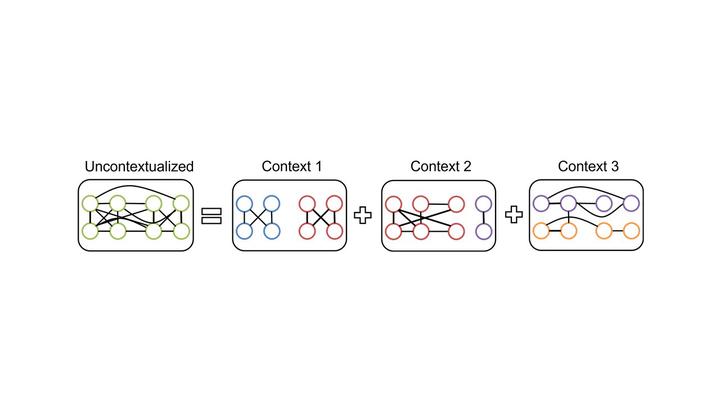Contextualizing Online Conversational Networks
 Uncontextualized network analysis can give misleading views of a network. A toy network is shown with 3 contextualized networks. Contexts 1 and 2 have similar structure, which left-to-right community structure. Context 3 has more top-and-bottom community structure. The uncontextualized network combines all of these views, and because of this, hides all of the structure previously seen.
Uncontextualized network analysis can give misleading views of a network. A toy network is shown with 3 contextualized networks. Contexts 1 and 2 have similar structure, which left-to-right community structure. Context 3 has more top-and-bottom community structure. The uncontextualized network combines all of these views, and because of this, hides all of the structure previously seen.
Abstract
Online social connections occur within a specific conversational context. Prior work in network analysis of social media data attempts to contextualize data through filtering. We propose a method of contextualizing online conversational connections automatically and illustrate this method with Twitter data. Specifically, we detail a graph neural network model capable of representing tweets in a vector space based on their text, hashtags, URLs, and neighboring tweets. Once tweets are represented, clusters of tweets uncover conversational contexts. We apply our method to a dataset with 4.5 million tweets discussing the 2020 US election. We find that even filtered data contains many different conversational contexts, with users engaging in multiple contexts. Central users in the contextualized networks differ significantly from central users in the overall network. This result implies that standard network analysis on social media data can be unreliable in the face of multiple conversational contexts. We further demonstrate that dynamic analysis of conversational contexts gives a qualitative understanding of conversational flow.